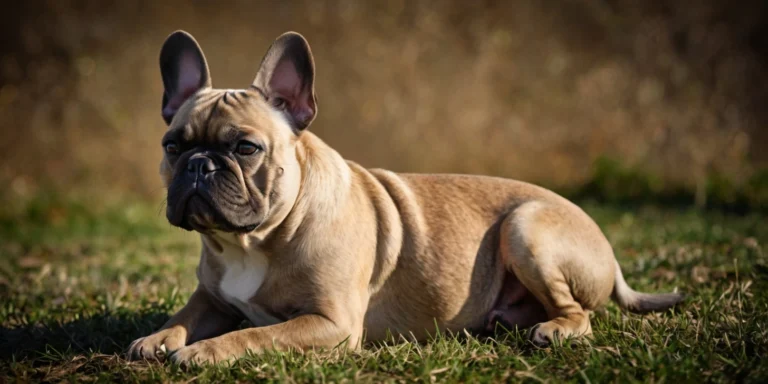Maltipoo Puppies Temperament: Your Guide to These Adorable Furballs
Maltipoo puppies, the enchanting cross between a Maltese and a Poodle, captivate hearts with their fluffy coats, sparkling eyes, and delightful temperament that blends affection, playfulness, and intelligence. These tiny designer dogs, often called Multipoos or Maltepoos, combine the Maltese’s cuddly devotion with the Poodle’s sharp wit, making them ideal for families, first-time owners, or anyone seeking a low-shedding, joyful companion. This comprehensive guide dives into the Maltipoo puppy temperament, exploring how they interact with people and pets, essential care tips to nurture their personality, and what to expect as they grow, helping you decide if these charming pups are the perfect addition to your home.
What Are Maltipoo Puppies?
Maltipoo puppies are born from a Maltese and a Toy or Miniature Poodle, starting at just a few ounces and growing to 4–20 pounds and 7–14 inches tall by adulthood. Their soft, wavy, or curly coats, which come in colors like cream, white, black, chocolate, or apricot, are low-shedding, making them popular for allergy-prone households, as noted by PuppySpot. With their teddy bear-like appearance and friendly nature, these puppies are adored for their adaptable temperament.
Maltipoo Puppy Temperament: Small but Mighty
Maltipoo puppies burst with personality from an early age. Their temperament shines through in these key traits:
- Affectionate: They crave cuddles, often sticking close to their owners like “velcro dogs,” seeking lap time and attention.
- Playful: Their lively energy fuels games like chasing toys or zooming around, bringing joy to any home.
- Intelligent: Thanks to Poodle genes, they’re quick learners, mastering tricks and commands with ease.
- Sociable: They’re friendly with kids, pets, and strangers, thriving in social settings when socialized early.
Their sensitivity requires gentle handling, and their need for companionship can lead to separation anxiety if left alone too long, as highlighted by Hill’s Pet.
How Maltipoo Puppies Interact with People
Maltipoo puppies are people-oriented, spreading happiness with their warm, engaging demeanor.
With Owners
These pups form tight bonds, craving attention and following their owners like tiny shadows. They love being part of daily routines, from morning play to evening snuggles, making them ideal emotional support companions, as shared by owners on My Doodle Puppy. Their loyalty shines early, creating a strong connection.
With Children
Their gentle, playful nature suits families with older kids who can respect their small size (often under 10 pounds as puppies). They enjoy interactive games but need supervision with younger children to avoid rough handling, as advised by The Spruce Pets.
With Strangers
Maltipoo puppies are typically curious and welcoming with strangers, greeting guests with wagging tails. Early socialization prevents shyness or excessive barking, which they may do to alert, per PetsRadar.
Maltipoo Puppies and Other Pets
These puppies are sociable with other animals when introduced early. They play well with dogs, cats, or smaller pets, their energetic nature making them great companions in multi-pet homes. Supervise interactions with larger animals due to their tiny size, as suggested by Dogsintl. Owners on X often share stories of Maltipoo puppies blending seamlessly with other pets when socialized young.
Nurturing Maltipoo Puppy Temperament
To bring out the best in a Maltipoo puppy’s personality, prioritize socialization, training, and a loving environment.
Early Socialization
Start socializing at 8–12 weeks by exposing puppies to diverse people, pets, sounds, and places, like parks or pet stores. Positive experiences during this critical period build confidence, ensuring they grow into friendly adults, as emphasized by Simply Southern Pups.
Positive Reinforcement Training
Their intelligence and eagerness make training a joy. Teach commands like “sit,” “stay,” or “come” using treats or praise, keeping sessions short (5–10 minutes) to hold their attention. Their sensitivity means harsh methods can cause anxiety, so stay gentle, as recommended by Daily Paws.
Managing Separation Anxiety
Maltipoo puppies’ attachment can lead to separation anxiety, causing whining or chewing when alone. Prevent this by:
If issues persist, consult a professional trainer, as noted by Embarkvet.
Maltipoo Puppy Temperament in Different Settings
Maltipoo puppies adapt well to various lifestyles, with their temperament thriving in environments that meet their social and activity needs.
In Apartments
Their tiny size and moderate energy (20–30 minutes of daily activity) make them perfect for apartments. Short walks or indoor play keep them content, ideal for urban homes, as owners share on social platforms.
In Family Homes
They shine in families with older kids, their playful and affectionate nature fitting active households. They may become clingy without enough interaction, per Purina.
With Seniors
Their cuddly temperament suits seniors seeking a low-maintenance companion. They enjoy light play and lap time, offering emotional support, as noted by rescue groups.
Potential Behavioral Challenges
Maltipoo puppies are generally well-behaved, but challenges may arise:
- Barking: They’re vocal, barking to alert or express excitement. Teach “quiet” to manage this, as suggested by PetsRadar.
- Separation Anxiety: Their need for company can cause distress. Gradual training helps.
- Chewing: Teething puppies may chew. Redirect with toys.
Early socialization and training, as emphasized by Great Pet Care, prevent these issues.
Exercise and Maltipoo Puppy Temperament
Their playful temperament requires 20–30 minutes of daily activity, such as:
Mental stimulation, like puzzle toys or trick training, keeps their clever minds engaged, preventing boredom-related behaviors, as noted by Hill’s Pet.
How Temperament Affects Training
Maltipoo puppies’ intelligence and eagerness make training straightforward. They learn commands like “sit” or “stay” quickly, often within days. Their sensitivity requires gentle methods:
Consistency ensures their temperament shines, as advised by Daily Paws.
Health and Temperament Connection
Health impacts temperament. Discomfort from teething, ear infections, or patellar luxation can make puppies irritable, while proper care supports their cheerful nature. Common concerns include:
A healthy Maltipoo puppy is more likely to be playful and affectionate, as per The Spruce Pets.
Caring for Maltipoo Puppies
Nurturing their temperament involves meeting basic needs.
Feeding
Feed high-quality puppy kibble for small breeds, giving 0.5–1 cup daily, split into 3–4 meals. Monitor portions to prevent weight gain, and provide fresh water. Consult a vet for tailored diets, avoiding toxic foods like chocolate.
Grooming
Brush their soft coat 2–3 times weekly to prevent tangles. Start professional trims at 3–4 months for the teddy bear cut. Clean ears weekly, trim nails monthly, and brush teeth to maintain health, supporting their happy temperament.
Exercise
Provide 20–30 minutes of daily activity, like playtime or short walks. Mental stimulation, like toys or training, supports their lively personality.
Choosing a Maltipoo Puppy Based on Temperament
When selecting a Maltipoo puppy, temperament is key. Reputable breeders, like those on PuppySpot, assess puppies’ personalities to match them with homes. Ask about:
Adopting from rescues can reveal temperament, especially for older puppies, per Embarkvet.
Fun Facts About Maltipoo Puppy Temperament
Tips for New Maltipoo Puppy Owners
Create a cozy space with a crate, comfy bed, and puppy-safe toys to make your Maltipoo feel secure. Invest in quality supplies, like a gentle slicker brush, puppy-safe shampoo, and a sturdy leash for walks. Stick to a consistent routine for feeding, playtime, and potty breaks to build confidence and reduce anxiety.
Join Maltipoo owner communities online or locally for tips, support, and playdate ideas, as shared by owners on platforms like X. Be patient during training, as their sensitive nature thrives on kindness and positive reinforcement. Start socialization early to ensure they grow into well-adjusted, friendly adults.
Conclusion
Maltipoo puppies, with their affectionate, playful, and intelligent temperament, are perfect for anyone seeking a cuddly, low-shedding companion. Their love for people and adaptability make them ideal for apartments, families, or seniors, though their sensitivity and need for company require dedicated care. By prioritizing early socialization, gentle training, and proper care, you’ll raise a joyful pup who brings love and laughter for years. Ready to welcome a Maltipoo puppy? Explore reputable breeders or rescues to find your furry friend!







